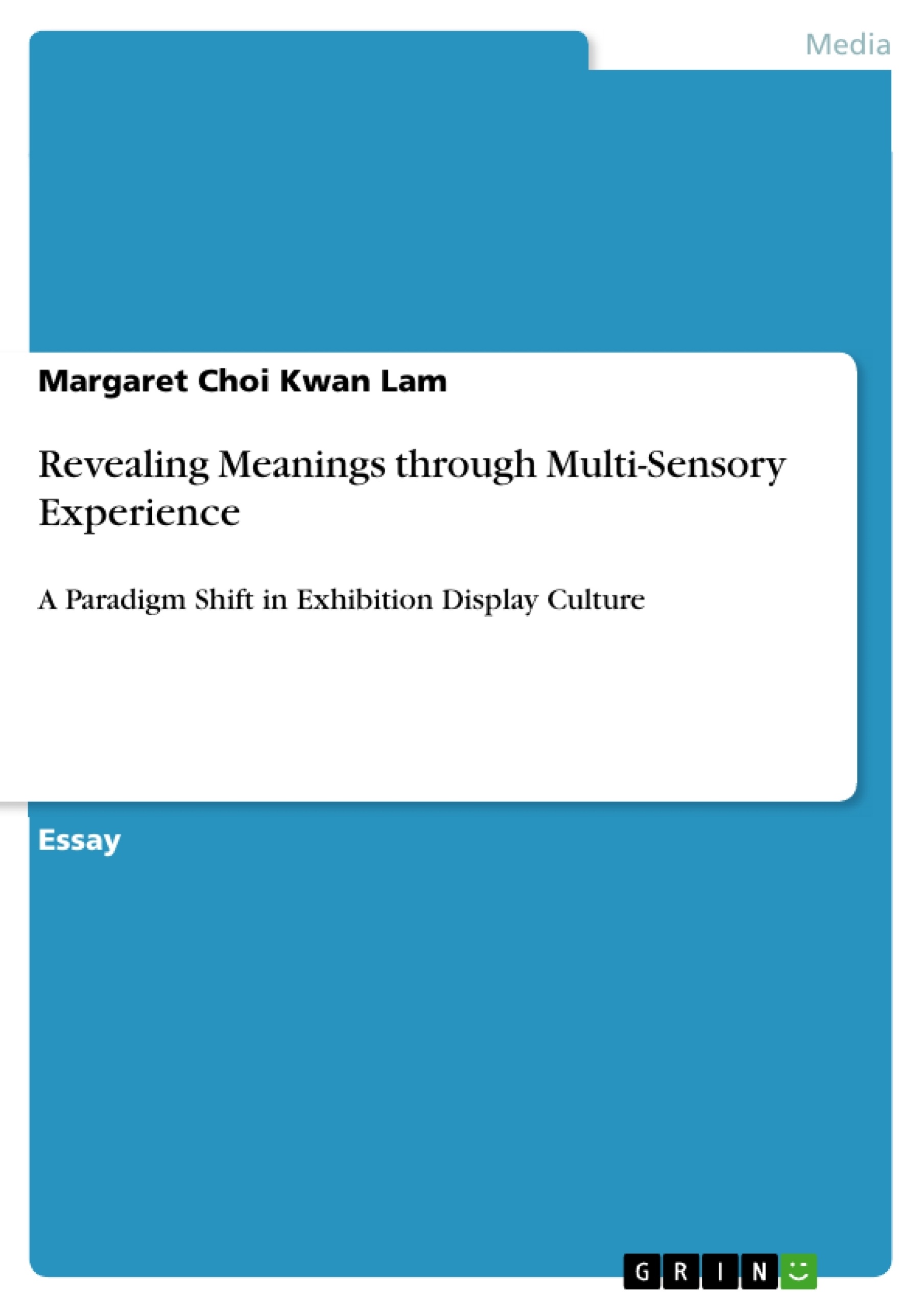Displaying art objects in exhibition is not only an artistic expression in the heart of curating, but it is also an essential interface for curators to present stories and convey meanings. How to engage people beyond purely-visual-appeals is always a top-of-mind-question embedded in curators’ mind, and the discourse has become a major concern among pioneers in recent times. Over the decade, frontier exhibitioners were attempting to breakthrough from a purely vision-dominated museum culture. Some exhibition experiments were successful, and the movement has fundamentally changed the way curators think about exhibition-making, including the ultimate purpose of displaying objects. The paradigm shift actually rings the bells and requires contemporary curators to pay attention to. It is crucial to realize that the recent success was not only about the artistic sense of the artists, but it is also the revolutionary belief of the frontier curators that has made it happen. This essay aims to uncover the distinctive differences in the core beliefs of multi sensory approaches, in order to find out dynamic answers to new display strategies. Cases include: Partners (Haus DerHunst, Munich, 2003), Rain Room (Barbican Centre, London, 2010), and HeinerGoebbels-Stifter’s Dinge (Ambica P3, London, 2012).
Inhaltsverzeichnis (Table of Contents)
- Introduction
- Discussion
- Section 1 Critique on Conventional Vision-Dominated Culture: Exhibitions Just for Knowing, Reading, Looking, Gazing, Encoding?
- Section 2: A Shift to Multi-Sensory Exhibition Approach
- Object focused? Experience focused? or Paradigm Shift?
- Multi-sensory Approach - Core Traits
- Section 3: Case Studies
- Partners (Haus Der Hunst, Munich, 2003) Walk-in-Film Experience
- Rain Room (Barbican Centre, London, 2012) An Immersive Experience
- Heiner Goebbels-Stifter's Dinge (Ambica P3, London, 2012) Experiencing Performative Objects
- Section 4: The Impact
- Role-shift of Audiences/ Visitors: From Passive Readers to Active Participants
- Role-shift of Curators: From Scholars to Experience-Creators
Zielsetzung und Themenschwerpunkte (Objectives and Key Themes)
This essay explores the shift from conventional, vision-dominated exhibition practices to a multi-sensory approach. It examines the motivations and core beliefs behind this shift, highlighting the changing role of objects and the emergence of new engagement strategies. The essay aims to reveal the impact of this paradigm shift on both audiences and curators, demonstrating how multi-sensory experiences can effectively convey meaning. Here are the key themes explored in the essay:- Critique of traditional, vision-dominated exhibition practices.
- The emergence and core traits of a multi-sensory exhibition approach.
- Case studies demonstrating the application of multi-sensory principles.
- The role-shift of audiences from passive observers to active participants.
- The evolving role of curators as experience creators.
Zusammenfassung der Kapitel (Chapter Summaries)
The introduction establishes the argument that traditional exhibition practices, focused solely on visual engagement, are no longer relevant in contemporary settings. This shift in approach is attributed to the work of pioneers who have successfully experimented with multi-sensory experiences, effectively changing how curators conceptualize exhibition-making. Section 1 offers a critique of conventional exhibition methods, questioning how they have shaped a purely visual relationship between objects and audiences. The section emphasizes the limitations of these practices in engaging contemporary visitors. Section 2 focuses on the rise of a multi-sensory exhibition approach, detailing its core beliefs and fundamental assumptions about the role of objects in exhibitions. It highlights the significance of experience-focused engagement over simply showcasing objects. Section 3 examines three contemporary case studies, illustrating the practical application of multi-sensory principles in real-world exhibitions. These case studies demonstrate the diversity of multi-sensory experiences and their capacity to engage audiences. Section 4 explores the impact of the multi-sensory approach on the roles of both audiences and curators. It posits that audiences are no longer passive observers but active participants, while curators have transitioned from scholars to experience creators.Schlüsselwörter (Keywords)
This essay explores the core concepts of multi-sensory engagement, exhibition design, and experience creation. It investigates the shift from traditional, vision-dominated practices to a more immersive, multi-sensory approach, examining its impact on both audiences and curators. Key terms explored include: multi-sensory approach, paradigm shift, exhibition display culture, engagement strategies, experience-focused, role-shift, immersive experience, and performative objects.- Quote paper
- Margaret Choi Kwan Lam (Author), 2012, Revealing Meanings through Multi-Sensory Experience, Munich, GRIN Verlag, https://www.grin.com/document/266358



